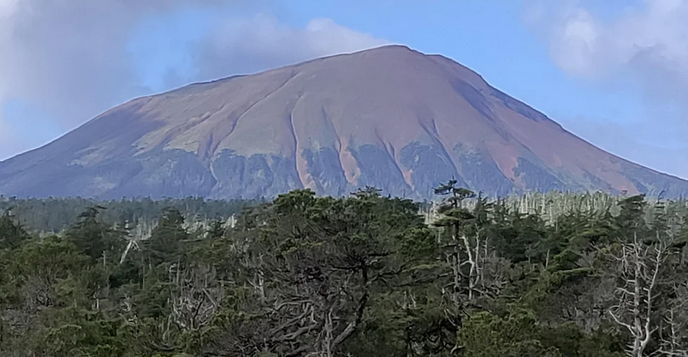On February 2nd, the Alaska Volcano Observatory made public the establishment of a sophisticated network of instruments designed to monitor the activity of a potentially reawakening volcano following a period of inactivity. This advanced network comprises four seismic stations along with four sites equipped to assess changes in the earth’s surface caused by the underground movement of magma. Since April 2022, this subterranean movement has triggered numerous minor tremors and sparked worries about the safety of Sitka, located 15 miles away, in light of a possible eruption.
Despite the apprehensions, the likelihood of an eruption remains low, with the newly installed instruments—set up last summer and assessed throughout the winter—serving as a vigilant watch over the potential threat.
Mt. Edgecumbe has no record of eruptions in documented history. However, Tlingit oral history recounts eruptions approximately 800 years ago, referring to the volcano as L’úx Shaa, meaning “blinking mountain.” Research from 2010 uncovered evidence of an ash eruption around 1,150 years ago, with findings indicating that such an event could pose a serious threat to nearby communities.
The detection of small earthquakes in 2022 prompted a closer examination of the volcano, revealing that since 2014, the ground near Mt. Edgecumbe had been expanding at an unprecedented rate compared to other Alaskan volcanoes. This expansion has recently decelerated, with Dietterich noting a significant slowdown in deformation rates, particularly in the latter half of 2023.
The installation of new monitoring equipment aims to enhance the observatory’s ability to detect minute changes around the volcano. These tools allow for real-time data collection on ground movements, improving upon the less frequent and less precise data obtained from satellite imagery. The addition of seismic instruments near the volcano enables the detection of even minor earthquakes, which, although typically unnoticed by the public, are critical for understanding volcanic activities.
Furthermore, investigations last summer into reports of gas emissions near the volcano resulted in the collection of samples for analysis. Recent findings indicate no definitive volcanic characteristics in the gases, suggesting the absence of a direct link between the surface and deep magma chambers.
